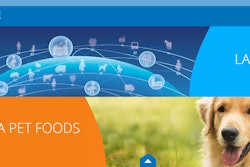According to the new market research report "Pet Food Ingredient Market by Ingredient (Cereals, Meat & Meat Products, Vegetables, Fruits, Fats, and Additives), Source (Animal-based, Plant-based, and Synthetic), Pet (Dog, Cat, and Fish), Form (Dry and Liquid), and Region - Global Forecast to 2025," published by MarketsandMarkets, the Pet Food Ingredient Market is estimated to be valued at USD 37.0 billion in 2019 and is projected to reach USD 54.3 billion by 2025, at a CAGR of 6.6% from 2019 to 2025. The growing pet adoption rates among the urban population and an increase in pet expenditure for premium products have been driving the pet food ingredients industry.
The PDF brochure can be downloaded at https://www.marketsandmarkets.com/pdfdownloadNew.asp?id=147.
The deboned meat & meat meal segment is estimated to account for the large share, in terms of value in meat & meat products segment, by ingredient, in 2019. The pet food ingredients market, by ingredient, is segmented into cereals, vegetables, fruits, fats, meat & meat products, and additives. These segments are further sub-segmented into the commonly used ingredients in pet food. The pet food industry is reliant on these ingredients for commercial pet food manufacturing, to formulate nutritionally balanced and complete pet food as per the varying nutritional needs among different pet species. The majority of these ingredients are by-products of food products manufactured for human consumption, and thus prove to be an economical solution for pet food manufacturers.
One of the emerging trends in the pet food industry is the incorporation of insects, as they are an excellent source of protein. Additionally, vegan and grain-free pet food products have been gaining popularity in the pet food industry. These trends are expected to increase the popularity of different fruits & vegetables in pet food to provide varied taste, texture, and flavor.
Browse in-depth TOC on "Pet Food Ingredient Market"
131 – Tables
60 – Figures
197 – Pages
The cat food segment, by pet, is estimated to witness the fastest growth in the pet food ingredients market in 2019. The pet food ingredients market, based on pet, is segmented as dog, cat, fish, and others. Dogs are the most popular pets adopted, and key players are focusing on offering pet food for them to gain a significant share in the pet food ingredients market. The US witnesses the highest registration of pet dogs, which is estimated to be more than 73 million.
The demographical statistics in Asia are unreliable as pet dogs do not have to be registered in this region. However, the number of pet dogs is estimated to be nearly 110 million in China and 32 million in India. The sales of premium cat food are on the rise, and its high cost has not caused any hindrance in the growth of the premium cat food market. The increasing focus of consumers on preventive healthcare is one of the factors driving the demand for expensive and high-quality cat food in the pet food industry.
North America dominated the pet food ingredients market in 2019, in terms of value and volume. North America accounted for the largest market share in 2019. The pet food ingredients market is consolidated in North America and dominated by several companies such as ADM, Cargill, Ingredion, SunOpta, DowDuPont, Darling Ingredients and Kemin. In North American countries such as the U.S. and Canada, the pet food ingredients market is driven by the expansion of production plants of leading companies and acquisitions to meet the rising demand from the pet food industry. These factors have fueled the growth of the pet food ingredients market in the North American region.
This report includes a study of marketing and development strategies, along with the product portfolios of the leading companies. It includes profiles of leading companies such ADM (U.S.), DSM (Netherlands), Cargill (U.S.), BASF (Germany), Ingredion (U.S.), Roquette Frères (France), SunOpta (Canada), Darling Ingredients (U.S.), Omega Protein Corporation (U.S.), DowDuPont (U.S.), Kemin (U.S.), InVivo (France), and John Pointon & Sons Ltd (U.K.).















